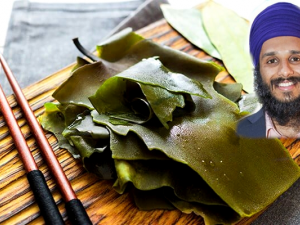Any part of your neck - muscles, bones, joints, tendons, ligaments, or nerves - can cause neck problems. Neck pain is very common. Pain may also come from your shoulder, jaw, head, or upper arms.
Muscle strain or tension often causes neck pain. The problem is usually overuse, such as from sitting at a computer for too long. Sometimes you can strain your neck muscles from sleeping in an awkward position or overdoing it during exercise. Falls or accidents, including car accidents, are another common cause of neck pain. Whiplash, a soft tissue injury to the neck, is also called neck sprain or strain.
Treatment depends on the cause, but may include applying ice, taking pain relievers, getting physical therapy or wearing a cervical collar. You rarely need surgery.Source
Harbir Singh of Barefoot Doctors suggests the following:
Self treatment for acute neck pain
Neck injuries are common in training, in weight lifting for example, these can occur when heavy barbells are balanced across the shoulder as in the front squat.
If you have a neck (cervical spine) problem you may notice pain or stiffness when moving your neck side to side, for example when you’re looking over your shoulder whilst driving.
The following series of articles will look at common injuries and how you can quickly self-manage these so that they do not develop into more longstanding issues.
If your symptoms do not resolve within a week it is advisable to see a healthcare professional.
Neck Strain or Sprain
In the case of a cervical strain/sprain, there are a number of things that can be done to facilitate healing. These two therapeutic techniques are intended to be used after the acute-phase of the injury, which is the first four days after the incident.
Remember that after a neck strain/sprain, the muscles in the neck will often become tight, guarding the affected area and limiting motion and mobility. Anything that can be done to safely alleviate muscle tension, improve range of motion, and promote blood circulation to the affected area, is going to help the healing process.
1. Manual Neck Traction
Applying gentle traction to the neck can often ease and elongate tight muscles, allowing pinched nerves or compressed blood vessels to be released.
Tight muscles will constrict and compress everything around them. The idea behind using traction is to create more space and alleviate pressure by improving the blood supply to the neck muscles, tendons, and ligaments of the affected area.
One of the simplest ways to do this is to:
Lie down on your back and place a folded (lengthwise) hand towel under the rear part of your skull that rounds out away from your neck.
Have a friend gently pull the towel straight towards them. Try to get them to hold the position for at least 3 minutes.
Repeat the exercise 2-3 times per-day or until you feel some relief. I have seen excellent results in my own clinic with as little as a few minutes a day.
2. Hydrotherapy
Soaking in Epsom Salt can be very helpful for the release of muscle aches and pain. The actual name of Epsom Salt is Magnesium Sulfate, magnesium is known to absorb through the skin and is a known muscle relaxant. Sulfate is known to help the remove of toxins.
Directions:
Adding 1 cups of Epsom Salt (30g) to a hot bath full of water. Soak your neck in the bath for 15 - 20 minutes, allowing the Magnesium to be absorbed through your skin.
----------------
Harbir Singh
M.OstMed
BarefootDoctors.co.uk





